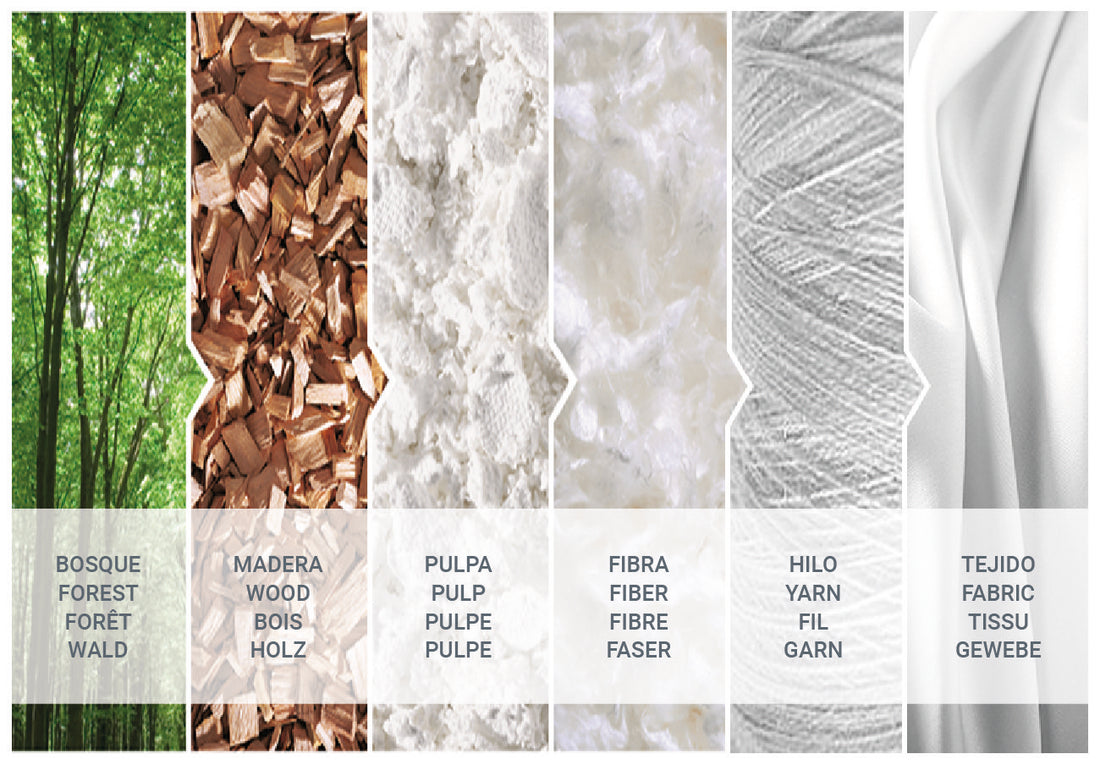Here at SueMe we like to use natural synthetic fibres in the production of our garments. Essentially this means we try to use where possible fabric that is manufactured from wood tree pulp. In the world of fashion and garment production, the choice of fabrics plays a crucial role in determining the quality, comfort, and sustainability of the end product. While natural fabrics have long been favoured for their breathability and eco-friendliness, the emergence of natural synthetic fabrics has opened up a new realm of possibilities. In this article, we will explore the benefits of incorporating natural synthetic fabrics into garment production.
1. Durability and Strength:
Natural synthetic fabrics, such as modal Tencil and lyocell, offer exceptional durability and strength. These fabrics are made from regenerated cellulose fibers, derived from sustainable sources like wood pulp. Despite their lightweight nature, they possess remarkable tensile strength, allowing garments made from these fabrics to withstand regular wear and tear.
2. Moisture Management:
One of the key advantages of natural synthetic fabrics is their excellent moisture management properties. These fabrics have the ability to wick away moisture from the skin, keeping the wearer dry and comfortable even during intense physical activities. Fabrics like bamboo viscose and soy silk excel in moisture absorption, making them ideal for sportswear and active lifestyle garments.
3. Breathability and Comfort:
Contrary to popular belief, natural synthetic fabrics can be highly breathable and provide optimum comfort. Fabrics like cupro and seacell are known for their breathability, allowing air circulation and preventing the buildup of moisture or sweat. This promotes a cooling effect on the skin, making them suitable for warm weather clothing.
4. Eco-Friendliness:
While synthetic fabrics have been criticised for their environmental impact, natural synthetic fabrics offer a more sustainable alternative. These fabrics are derived from renewable resources and often undergo a closed-loop production process, minimising waste and reducing the use of harmful chemicals. They are biodegradable and have a lower carbon footprint compared to traditional synthetic fabrics like polyester.
5. Versatility and Aesthetic Appeal:
Natural synthetic fabrics come in a wide range of textures and finishes, offering versatility in design. They can mimic the luxurious feel of silk, the softness of cotton, or the drape of linen, providing designers and manufacturers with ample creative options. These fabrics can be blended with other natural or synthetic fibers to enhance their properties and create unique combinations.
Conclusion:
The utilisation of natural synthetic fabrics in garment production brings numerous benefits to both manufacturers and consumers. From their durability and moisture management properties to their eco-friendliness and aesthetic appeal, these fabrics provide a sustainable and comfortable choice for fashion-forward garments. As the fashion industry continues to prioritise sustainability and innovation, embracing natural synthetic fabrics opens up new possibilities for creating stylish, functional, and environmentally conscious clothing.

